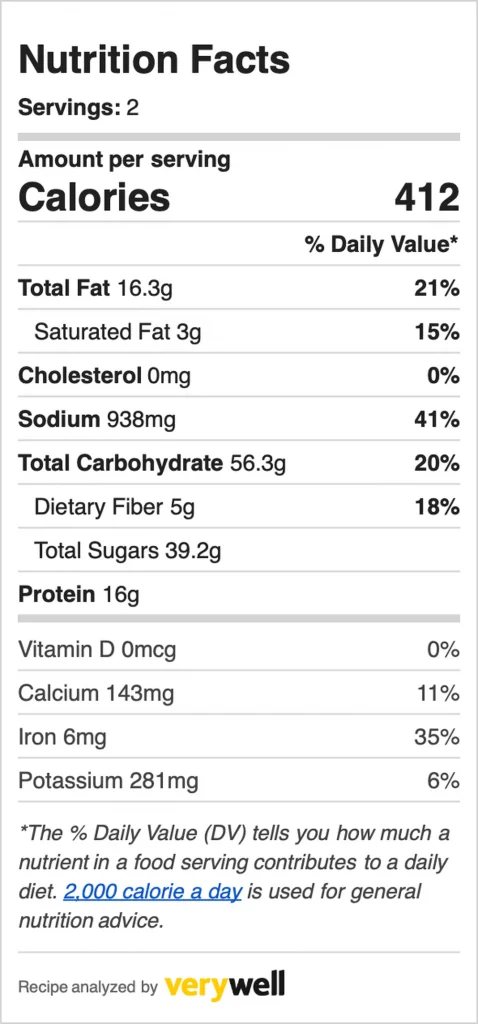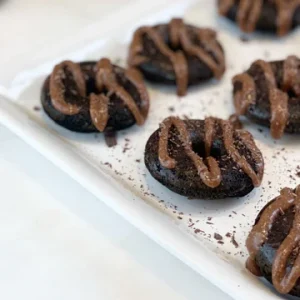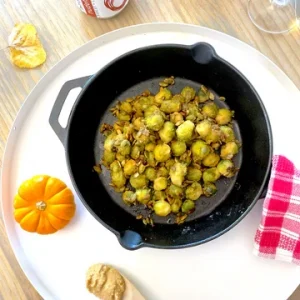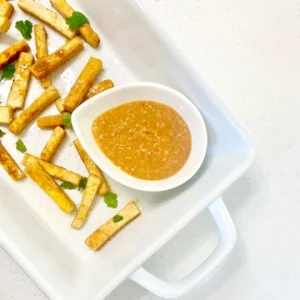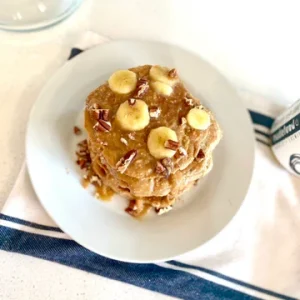Looking for an adult lunch that is easy to make and just as delicious?
This recipe has saved us during busy days where we want the taste of something gourmet, without spending a lot of time making it. The star of the show is the combination of gochujang and natural peanut butter, which creates a balanced and creamy delight with a little bit of spice in these rolls. The duo together tastes like an intricately created sauce, when it’s just 2 easy pantry ingredients!
Although these fillings would taste delicious on a sandwich or tortilla wrap, we gave it a cozy rice paper blanket for a gluten free alternative that switches up your lunchtime routine for something you’ll want to whip out before noon.
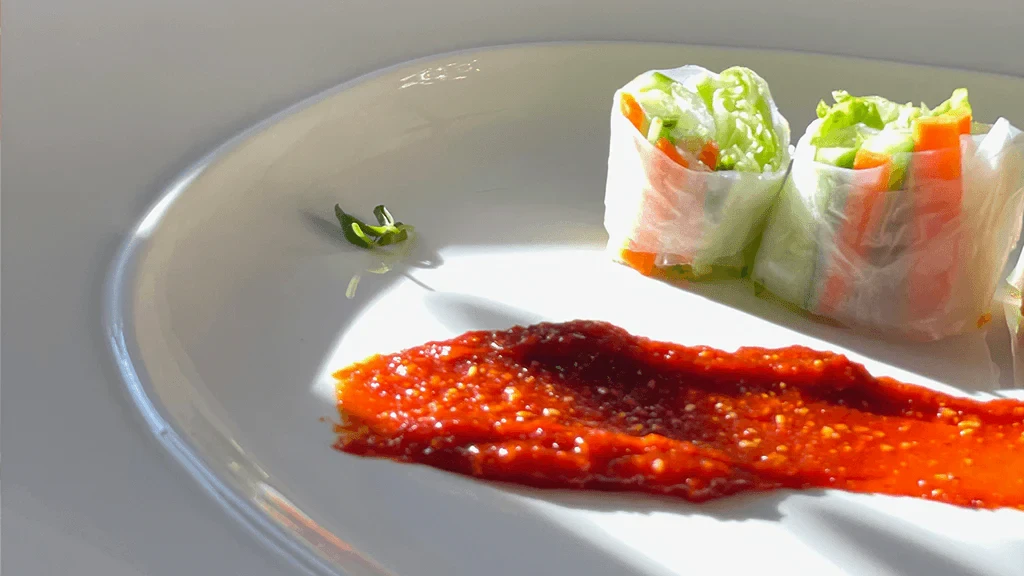
So, what is Gochujang (gow-choo-jang)? It is a red chili paste with a savory and sweet taste that is common in many Korean dishes. This bold red condiment isn’t your average chili paste, as it’s fermentation brings a depth of flavor that compliments many dishes deliciously. Many (including us) have tried this sauce once and it soon became a kitchen staple that they couldn’t cook without. This flavourful umami paste is full of some of our favorite ingredients, often including:
- Korean chili powder
- Sticky rice
- Fermented soy beans
- Garlic
- Onions
- Sesame
- Sweetener
- Salt
Health Benefits
Like kimchi, it is a fermented food, and shares many of the same benefits from the fermentation process. One of the key stars in fermented foods are probiotics, that help balance the friendly bacteria in your digestive system. Who knew a yummy food like this could lead to a healthier gut?!
The capsaicin, which is the chemical compound that makes chilis hot, is a main contributor to the spicy level of the paste, and also offers some health benefits. According to some studies, it has been found to also have anticancer properties, making chili peppers a healthy addition to these salad rolls.
This gochujang sauce has minimal ingredients, just like another spread we love *wink wink*. Keeping food simple often means there are less allergens, and less additives such as sodium, processed sugars and saturated fats. The crimson Korean paste is:
- Fat free, so no cholesterol
- Completely plant based, so suitable for many diets
- Very low in sugar
- Low in carbohydrates!
Origin & Other Dishes
Gochujang is a condiment with a kick, and has been referred to as essential in the Korean diet. Gouchu, the first half of the name, means chili peppers – the main ingredient of the fermented paste. The second half, “jang,” refers to the other main ingredient in the paste: soybeans!
Gochujang is used in Korea for many dishes – but we wanted to put a fusion spin on it and include it in fresh rice rolls. Traditionally, it is used in meals such as:
- Stews and hotpots
- Marinades for meat
- Sauces like barbecue sauce or for stir fries or rice bowls
- Salad dressings
- Flavour for veggies
Gochujang and Peanut Butter
The umami spice that gochujang serves our taste buds goes a long way when it’s used in unison with our favourite condiment: peanut butter. First, we LOVE how these rolls just need 2 spread ingredients to make them delicious. Just grab your 2 pantry staples and add them into your wrap – easy as that!
There is something about the combination of creamy natural peanut butter and spicy spreads… something we can’t wait for you to try! Keep scrolling for the easy recipe that you’ll want to save!
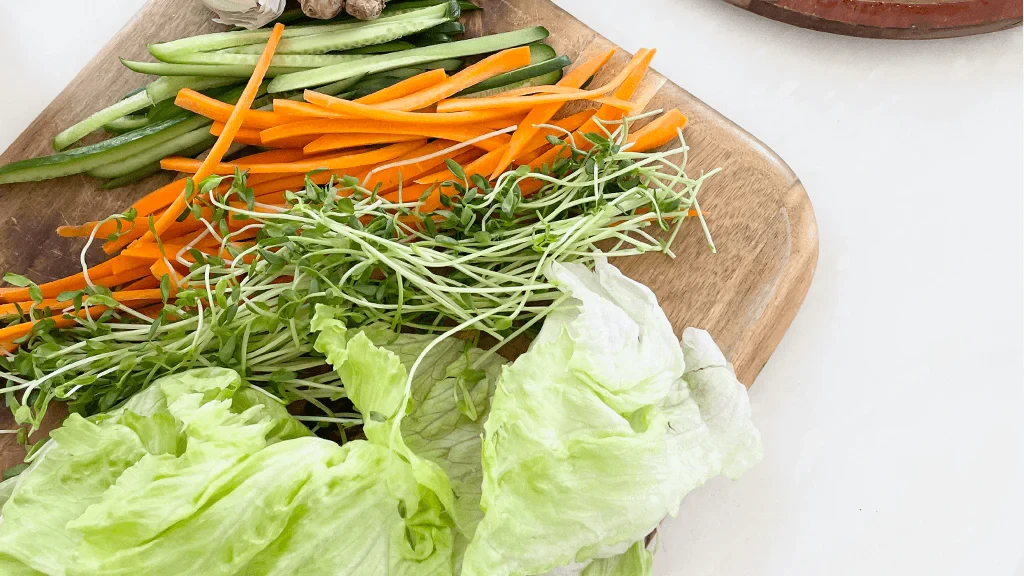
The Recipe – Peanut Butter + Gochujang Salad Rolls
Prep time: 10 min, Set Time: 20 min, Total Time: 30 min
Serves: 4
Ingredients
The Peanut Sauce
The Rolls
- Rice paper
- Cucumber
- Lettuce
- Sprouts
- Shredded carrots
Directions
- Add cold water to a plate or pan that will fit and submerge the rice sheet. Soak for about 10-20 seconds then take it out of the water, shake it off and move to a plate or cutting board.
- Spread your ideal amount of natural peanut butter in a leaf of lettuce, then add as much gochujang paste as you want on the same leaf. The more, the spicier!
- Add all your favourite fillings! We found cucumber, sprouts and carrots went well together, but be creative. Some other great salad roll ingredients include:
- Red cabbage
- Thin rice noodles
- Green onion
- Basil
- Mint
- Cilantro
- Mushroom
- Avocado
- To make your plate of toppings into a roll, fold your rice wrap like a tortilla: fold the bottom up and roll over to one side and press the rice wrap up to seal the other end. Repeat until you have as many wraps as you hope to make!
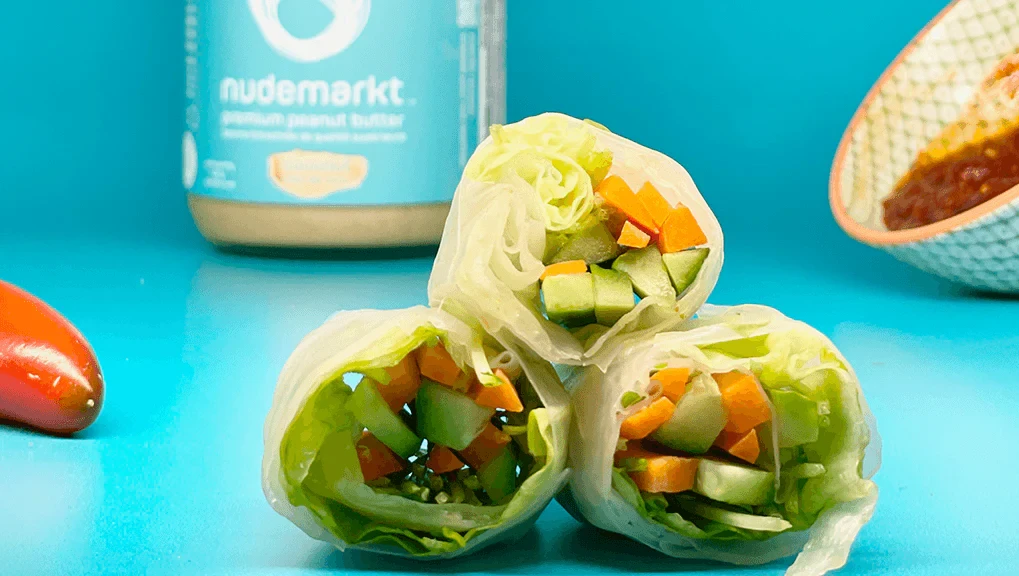
If you do not have Gochujang on hand, but have other ingredients, here are some swaps that you can make for your salad rolls:
- Ground red chilli flakes and soy sauce, with sweetener like maple syrup or agave
- Miso paste and sriracha
You can also make your own gochujang paste, and swap out ingredients for any allergies you may have! Here is an easy recipe to make gochujang yourself:
Make Gochujang Yourself
Ingredients:
- ¼ cup Korean red chili pepper flakes
- ⅓ cup water
- 2 tbsp sweetener such as agave, honey or maple syrup
- 3 tbsp miso paste (substitute for tahini to make soy free)
- ½ tsp rice vinegar
- ¼ tsp salt
Substitute Instructions:
- Combine Korean red chili pepper flakes, water, sweetener and miso paste in a pot over medium heat. Keep stirring until it starts to bubble.
- Take it off the heat and let it sit for 10 minutes.
- One by one, stir in the vinegar and salt.
- Use it for your salad rolls once it has cooled, and store the rest in the fridge for up to 1 month
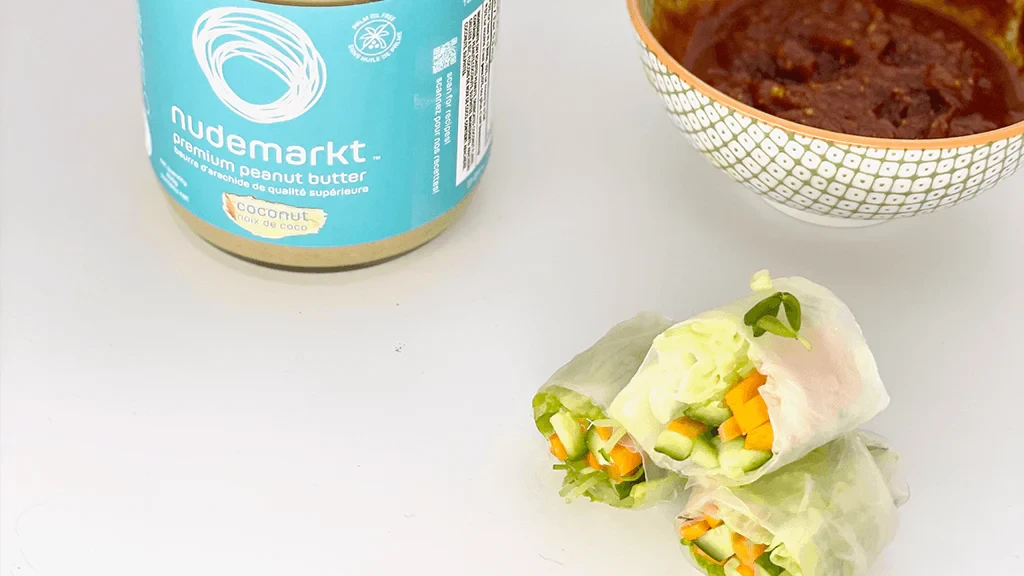
FAQ’s
What is the difference between summer and spring rolls?
Unlike spring rolls, which have a crispy fried, flour based wrapper, summer rolls are served cold with rice paper wraps. You may have also heard them be called Vietnamese spring rolls, fresh spring rolls or salad rolls, and they are often served with a peanut or hoisin dipping sauce!
What is the trick to hydrating rice paper and working with it?
• Use cold water. It makes the wrap less sticky and fragile.
• Only a few seconds in water are needed. The wrapper will continue to soften as you add your toppings.
• Keep them wet to prevent them from sticking to the surface you are rolling them on.
• Don’t overfill to avoid tearing the rice paper wrapper.
Approximate nutritional value
